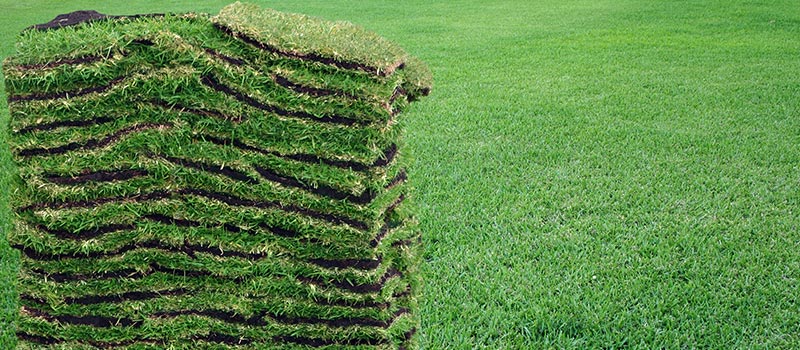1. Do a Soil Test
2. Measure the Area
After testing the soil and making any needed adjustments, measure the area that will be sodded. This can be done with a tape measure. Measure the width and the length, and multiply the two together to get the ‘area.’ For more irregular shaped lawns, the ‘step’ method can be used which breaks your lawn down into basic shapes and then adds them together. To ensure full coverage, you should order about 5 to 10 percent more sod than you estimate you need.
3. Get Rid of Old Grass
4. Prepare the Site
Prepare the installation site to make it easier for new grassroots to penetrate deeply and grow evenly. Deep roots make lawns denser and more drought-resistant. Having a denser lawn also improves water and nutrient use, crowds out weeds, and resists disease and insects. Here’s a quick overview of site preparation steps to give you a general idea: Clear the site of all building materials and debris Rough grade the area to eliminate drainage problems Till to a depth of at least 2 inches (5 cm) Add topsoil for a total depth of 4-6 inches (10-15 cm) Finish grading the entire site Roll the area with a lawn roller.
5. Install the Sod
Don’t let your sod sit on the pallet for too long. You should have it in your lawn within 48 hours or less of delivery to avoid grass drying out. Use a brick pattern when laying sod and a landscape edger or machete to cut around corners and at the edges. Since most sod harvesters cut the sod at a slight angle, you can get tighter seams by matching the angle on the pieces to fit close together. After the sod is laid, roll it down for smoothness. Don’t worry too much about visible seams, they’ll disappear in several weeks.
6. Water, Fertilize, and Mow
Water the sod thoroughly after installing the sod and then water as needed to prevent the grass from drying out. Don’t over water too much though! It can damage the turf, cause disease, and rot the roots. During the active growing season, it takes about 7 to 10 days for the sod to establish (cooler months can make it take longer). Also, keep traffic to a minimum for the first two to three weeks after installation so the roots can firmly knit with the soil and the area stays smooth and level. It’s also important to check for proper rooting – you can do this by lifting a corner and seeing if roots have connected to the ground. Lastly, mow the new sod about 7 to 10 days after installation.

